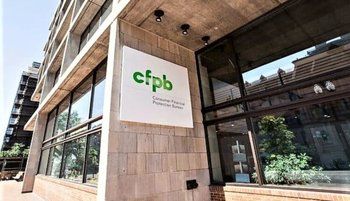Shared Appreciation Mortgages Re-Debut
If you're in the market for a mortgage this fall, you may begin seeing ads for "Fixed Rate Mortgages at 6%!" It's a "new" old mortgage concept: the Shared Appreciation Mortgage, or SAM.
The SAM was introduced in the early 1980's, when interest rates were high enough to make mortgage qualifying a real challenge. The idea was to give borrowers a lower interest rate -- as much as 2% -- in exchange for sharing the property's increased future value with the lender. It promised both easier qualification and a monthly payment that was easier on the budget.
But the concept never caught on; adjustable rate mortgages (ARMs), with both a lower rate today and the potential for a lower rate tomorrow, proved more attractive than any fixed rate mortgage. The SAM, like other niche products, was shelved.
Now, however, mortgage rates are uncomfortably high again, and ARMs have lost much of their luster, with first-year rates not far enough below FRM rates to attract many borrowers.
How Does the SAM Work?
The SAM is a fixed rate, fixed term loan that can run up to 30 years. In exchange for a lower interest rate, you agree to give up a portion of the home's future value -- the difference between what it's worth now and what it will be worth then.
The interest rate is reduced depending on how much of the property's appreciation you bargain away. For example:
SAM w/20% Appreciation given to investor: 7.50%
SAM w/30% Appreciation given to investor: 7.00%
SAM w/40% Appreciation given to investor: 6.50%
SAM w/50% Appreciation given to investor: 6.00%
(Note that the actual appreciation share/interest rate breaks may differ from this example.)
Any increase in the value of the home will be split with your mortgage lender if you refinance, move (paying off the loan in the process) or otherwise terminate the loan.
Say you buy a home valued at $100,000. After three years, you decide to move; your home has appreciated by $9,273. In a 50% revenue-sharing arrangement, you'd owe the lender half that -- $4,637 -- plus, of course, the remaining unpaid balance of your loan.
Breaking Even
This example assumes that you reduced your mortgage rate by 2 percent. Let's look at how the SAM compares with a traditional FRM.
Traditional:
Monthly payment: $587/mo
Interest paid after 36 payments: $18,957
Remaining balance: $77,824
SAM:
Monthly payment: $479/mo
Interest paid after 36 payments: $14,134
Remaining balance: $76,867
The difference comes to $3,867 in interest payments after 36 months. Add the additional equity saved due to the lower interest rate ($957), and you're ahead $4,824 in three years.
Out of that, however, you owe $4,637 to the lender (equal to 50% of the appreciation). Your savings dwindle to $187 in three years.
SAM and Prepayment Penalties
It might be tempting to take a SAM for a while and then refinance to avoid sharing the appreciation, but SAMs have a sort of prepayment penalty to keep you from doing so. Typically, if you prepay more than 20% of the outstanding balance during the first 3 years of the loan, you'll be penalized the lesser of
b) six months stated interest which would be charged on amount of my prepayment which is greater than the 20% level, or
c) the maximum allowable penalty by law (which varies by state).
It's actually an anti-refinancing clause, since the fee is based on how much above the 20% you send. If you were to send 21%, for example, your fee would be based on that 1% overage, which wouldn't be much. Send in all $80,000 by refinancing, though, and it begins to bite: you could owe $1600 (2% of $80,000) or a charge of as much as $2,400 (approximately six month's stated interest) --perhaps more, if state law allows.
Selling your home doesn't trigger this clause; you'd owe only the principal balance, plus the percentage of the appreciation you agreed to share.
Appreciation Defined
Since appreciation is at the heart of this mortgage, it's important to know how the term is defined.
Virtually all improvements or upgrades you make to the home will count as appreciation; so will the appreciation which results from market conditions. If you add an attic dormer or finish the basement, for example, you'll be liable for the agreed-upon share of the increase in value.
Should you give away up to 50% of the increase -- adding as much as 50% to the cost of your project? You don't necessarily have to, if you follow the rules of the SAM closely.
The SAM's loan documents state that a "Qualified Major Home Improvement" (QMHI) can be excluded from the calculation. A QMHI is one which increases the living area of the home; any "substantial" kitchen and bath modernizations; new decks, porches, patios, garages; and paving an unpaved driveway. In addition, the total cost of the project needs to exceed $10,000 or 6% of the original value (or adjusted value) of the home, and it must be completed within six months after you've started it.
Items the lender deems as "ordinary maintenance," however, may not qualify as a QMHI. The list typically includes repair (or replacement) of roofs, ceilings, walls, floors, foundations, heating and/or air conditioning systems, electrical and plumbing systems, windows, doors, landscaping, pools, sheds and even paint and wallpaper. They may be counted as part of a larger improvement, however.
A QMHI can cause an increase in the home's value to which the lender isn't specifically entitled. To avoid this, you can ask the lender to adjust the home's "basis" value by having it appraised before and after the project. It's your responsibility; failure to do before the project begins will mean no change to the basis value. If that happens, you'll be liable for the entire amount of appreciation. In other words, you're giving compounded money away later by not paying for an appraisal today.
In theory, if you added a level and improved the value of the home by $15,000, the appraisal beforehand should have showed your value at $100,000 before and $115,000 after. The lender would not receive any share of that increase, since the new basis value of your home would rise to $115,000.
Creeping Appreciation
At first glance, it appears as though the rules for measuring appreciation seemingly contradict themselves by excluding "ordinary maintenance." In reality, though, the lender benefits as you gradually improve the home. For example, gradually adding $3,000 worth of improvements to your $100,000 home over several years -- that is, not as part of a QMHI -- will be judged "ordinary maintenance," and will let the lender share in the added appreciation which results.
It's easy to see how the dollars add up with "maintenance" items. Before you install hardwood floors or new windows, you might consider combining several such improvements until they qualify as a QMHI. (Remember, they have to meet a certain dollar threshold and be completed within six months). We suggest you contact the lender beforehand to see if any improvements might be considered a QMHI if they are included in a substantial modernization or "expansion of living area" project.
The End of the SAM
If you keep the SAM for the full 30-year term (lesser if you've been prepaying), you may need cash to pay for the lender's appreciation share. Assuming an average of 2.5% price inflation, your $100,000 home will be worth a whopping $204,640 after 30 years. In a 50% appreciation-sharing arrangement, you'll need to come up with $52,320 in cash after your last payment. One way is to invest most, if not all, of your interest savings over that time. An $80,000 30-year fixed rate mortgage at 8% would have cost about $131,324 in interest over 30 years. With a 6% SAM, you'd save $38,654 in interest, leaving a shortfall of $13,666 (not counting any interest from investing it).
If you're not selling your home when the SAM ends, you'll need to come up with the money, whether from savings or a home equity loan. If you're facing retirement -- and the prospects of living on a more fixed income -- at that time, you might be dismayed at the prospects of another starting a new mortgage. The contract states that what you owe is due and payable, with no extensions.
Be aware, also, that the full loan amount, plus any appreciation, may become immediately due if you don't live in the home for at least a year.
Declining home values
If your home's value declines during the SAM term, the lender doesn't receive anything additional; you're only liable for the mortgage amount. If the value declines too much, however, you may be left with no equity at all. Values today are at lofty levels, and a sharp decline could make it difficult even to repay the remaining mortgage amount.
Worse yet, the total cost of selling your home plus the mortgage payoff (and any penalties you might incur) could greatly exceed the amount for which the home can be sold. You could face a large out-of-pocket sales expense.
Is a SAM for you?
With the opportunity to qualify for a mortgage -- or obtain a larger mortgage with the same income -- a SAM could provide opportunities that more traditional mortgage arrangements can't, such as buying a home without using all your available cash, or simply buying a larger home.
However, complicated mortgage loan structures aren't for everybody, and a SAM may or may not be the product for you. A SAM might be in your future if you believe that home values in your area won't rise or fall too much.
Wouldn't a lot of appreciation be good? Not necessarily. First, you're obliged to share the gains. Also, if property values have risen overall, you may need that cash to trade up to a larger home. On the other hand, if the value doesn't change much, you'll owe little if anything, but you'll have enjoyed a cut-rate mortgage while you're there.
A SAM might be used as a refinance product as a way to free up some cash each month for more pressing obligations, especially if you have little equity. Debt-consolidation refinances are common, but may tap out all the equity you've built. High Loan-to-Value refinances -- in which you borrow 100% or more of the home's value -- usually come with higher interest rates, fees or both. A SAM, however, can give you a low rate and more available cash now, and defer the outlay until later. This is apparently the audience that the SAM is intended for.
A SAM may or may not be a product suited for the long term, either. The loan documents specifically note that "on a statistical basis, you should assume that the total interest cost of a SAM will be equal to or more than the total cost of a conventional mortgage." With a traditional mortgage, those total costs are largely known. A SAM may end up costing more than you expected, or budgeted.
A SAM might also not be the best choice if you aren't diligent about your finances, or if you wouldn't want to bother with the needed appraisals to keep the basis value current. And it might not be the right product for a below-market property which needs a lot of TLC, but not a Qualified Major Home Improvement to shield your out-of-pocket investments. If a good cleaning, painting and simple maintenance will increase the value of the home measurably, you could end up spending at least some of your savings on regular appraisals, or face losing some of your "sweat equity".
The SAM and Uncle Sam
Deducting mortgage interest is easy with a traditional mortgage; a SAM adds a serious layer of complexity, as noted (in capital letters) in the disclosures. It also states that "the application of federal income tax rules [as they apply] to a SAM is both uncertain and complicated, and the rules will affect each borrower differently." In other words, you may need an accountant.
It's messy for a number of reasons -- the potential for changing the value basis, for example -- but primarily due to annual statements that assume you've paid interest (for tax purposes) at a "competitive market rate" for a non-SAM mortgage. Why? Since you're actually paying the lender interest (albeit on a deferred basis), you should be entitled to deduct a portion of the interest you've actually paid. Chalk it up to IRS regulations: they may deem that the "competitive market rate" rate determined by the lender was higher than it should be, and that you are deducting more interest than is warranted. There are other potential complicating factors, too, enough so that an entire legal page is devoted to the mess it could become. Suffice it to say that you'll likely need professional help to do your annual returns.
If not SAM, then what?
Although there are no fixed rate mortgage products in the open market which can give you up to a 2% below market rate, there are be other alternatives to the SAM.
For a home purchase, you can investigate state Home Mortgage Finance Agency programs which may be available to you. Your states may lend you money at well below market rates if you meet certain income requirements, or are purchasing a home in a certain area.
Other options include a 2-1 buydown; it can lower the interest rate by about 2% below market for the first year, then 1% below market for the second year, ending up just a little above market rate for the remaining term. They're easier to qualify for, and could be useful if you are fairly certain that your income will rise in years ahead.
And there are various Adjustable Rate Mortgages (ARMs), but you'll need to scour the market for a decent break in the interest rate; at the time we wrote this, real deals in ARMs were few and far between.
An Interesting ScenarioSo you chose a SAM (with a 50-50 appreciation split) over a 30-year FRM because it looked like the better deal. But you're worried about coming up with the cash needed to give the lender his share. Consider using the savings creatively. Instead of a monthly FRM payment of $1,468, you're paying $1,199. Use that 'extra' $269 per month to prepay your loan. That way, instead of shelling out $328,310 in interest (FRM) or even $231,676 (non-prepaid SAM), you'd pay just $136,574 in total interest charges over the term of the loan. Not only that, you'll reduce the SAM's term from 30 years to less than 20 -- and hopefully reduce the lender's take as well. Compared to the SAM with no prepayment, you've saved $95,102 in interest, which might be enough to cover what you'll owe the lender at the time of payoff. And, compared to the 30 year fixed rate, you pocketed $191,735. Call it the SAM Scheme. |
This article was originally published in 2000. After making a very minor splash in the market, the Shared Appreciation Mortgage has vanished from mortgage menus again. At some point, we expect to see it return.
Copyright © 2006, HSH Associates. This article may be copied and distributed, providing that full source credit is left intact and a link to (or mention of) our Web site is included (in text form, if applicable).



